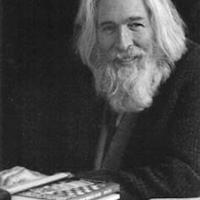
Chess Mysteries of Professor Smullyan
Raymond Smullyan is one of those towering intellects in the tradition of Da Vinci and Godden. His Wikipedia page describes him as a “mathematician, concert pianist, logician, philosopher and magician,” to which I would add Professor Emeritus of Philosophy at Indiana University. While many know of him due to his numerous popular books on logic puzzles, my own acquaintance with his work was via one of his scholarly books on mathematics – Gödel’s Incompleteness Theorems.
I only discovered his interest in chess when I purchased a copy of Philosophy Looks at Chess, edited by Benjamin Hale, and read the first chapter by Prof. Bernd Gräfrath, which highlights Smullyan’s retrograde chess problems.
If you are unaware of this class of problems, they are not like the “mate in three moves” type of problem where you are thinking ahead with deductive logic. As suggested by the name, in retrograde analysis the reader is asked to think backward and determine the one or more moves that resulted in the given position.
A fairly simple retrograde problem composed by Smullyan appears in his book Lady or the Tiger?
At first glance the preceding position appears to be illegal because the black king is in simultaneous check by both the white rook and bishop. How did the bishop check the king if his majesty was already in check by the white rook (and vice versa)? The position is legal, however. What was white’s last move?
A more challenging retrograde problem appears in Smullyan’s delightful tome entitled The Chess Mysteries of Sherlock Holmes: Fifty Tantalizing Problems of Chess Detection. This book is one of two retrograde chess books published by Smullyan, the other being The Chess Mysteries of the Arabian Knights. Smullyan mimics Arthur Conan Doyle in the first book by narrating the fictional chess adventures of Sherlock Holmes and Dr. Watson. In the first chapter, Holmes and Watson enter their local chess club where they see ...
You will notice that the Black king is checkmated by the White bishop. Sherlock Holmes considers the position momentarily, then announces which side of the board White played from (top or bottom of the board), which astonishes Dr. Watson, as well as the two players who had just finished the game.
Later that evening as Holmes and Watson are relaxing at Baker Street, Watson asks Holmes how he had deduced which side was White. Holmes answers, “Why, the position, Watson, the position. Don’t you recall anything peculiar about the position?”
The ensuing discussion occupies the next five pages and is too long to repeat here, but I will suggest how you can solve the puzzle. In order to know which side is White, you must ask yourself what White’s last move was. And in order to answer that question correctly, you must first determine what Black’s last move was before White delivered mate. This is the type of reverse engineering that is involved in retrograde analysis where you think backward from the position, rather than forward.
If you spend some time on this problem, you can likely solve it, although it will require some effort.
Gräfrath is, like Smullyan, a professor of philosophy and his interest in Smullyan’s retrograde puzzles relates to Smullyan’s academic philosophical beliefs, rather than merely his skill as a problemist. The chapter in Hale’s book discusses such notions as logical positivism, antiverificationism, metaphysics, and cognitive optimism.
Gräfrath is of the opinion that Smullyan’s best retrograde problem relates to the following board position, which is also drawn from the Sherlock Holmes book.
Notice that the Black king is in check by White’s rook. If you study the position, you will realize that the only legal move that put the king in check was for White to have captured a Black piece on d8 with a pawn, promoting the pawn to a rook.
Not indicated in the diagram, but crucial to the problem, is the fact that there is an unknown missing piece on h4. In the story, there is a shilling coin lying on h4 because a child ran off earlier with the missing piece. The story continues with the following:
“I understand the servants have been looking for it for hours, but it still has not turned up."
"Doubtless it will," said Holmes. "And what piece is it?"
To my surprise, at this point the other gentleman— clearly the senior of the two—arose and said, "Are you not Mr. Sherlock Holmes?"
[… some text deleted …]
"If you are truly Sherlock Holmes, you should be able to tell us which is the missing piece!"
Within five minutes, the logical Mr. Holmes had solved the puzzle of the missing piece.
Can you?
The solution is, of course, elementary.

